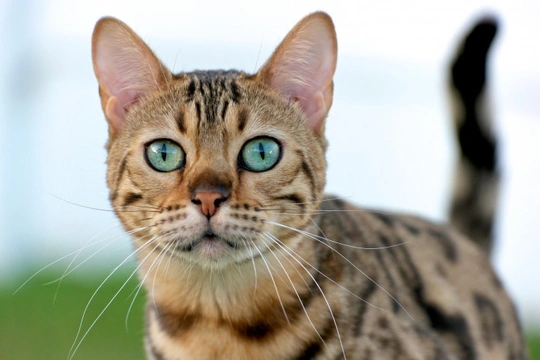Pets
Pets for studWanted petsBreedersAccessories & services
Knowledge hub
Support
Support & safety portal
Five cool things about cats that we now know more about thanks to science
Cats have built up something of a reputation for being mysterious, hard to understand creatures, and they actually deliberately mask their emotions and feelings in some situations, such as when they are feeling ill or threatened-they will work hard to stay out of the way and not let anyone know that they are not feeling 100%, as a natural defence mechanism against predators.
Compared to other pets like dogs too, cats are certainly not that easy to read; while dogs have adapted and evolved different methods of communication in order to communicate clearly with people and be able to build up a mutual “language” that both species understand. Cats on the other hand have not done this; they communicate with people just as they would with other cats, and it is up to us to interpret it!
However, thanks to research, studies and advances in our scientific understanding of one of our favourite companion pets, we now know more about cats than we ever have before-and keeping up with what’s new in cats can be really interesting for cat owners!
In this article, we’ll share five cool things about cats that we now know more about, thanks to science. Read on to learn more!
Cats are really well equipped to handle the heat
Cats of course have a year-round fur coat that often makes us feel rather bad for our feline companions when the weather is baking, because they cannot simply shrug it off in order to cool down. However, cats are actually really well equipped to handle hot temperatures, despite their fur-and this is an evolutionary trait that cats have retained since well before they were domesticated.
First of all, the ambient body temperature of the cat is a touch higher than that of people-37.7-39.1 degrees Celsius, compared to our own 37 degrees, which means that cats are more apt to feel the cold than we are, and need a slightly higher ambient temperature in order to be comfortable.
Secondly, because cats evolved in the deserts, they do not need to drink very much water in order to stay hydrated, which means that they have developed coping mechanisms for heat other than sweating. Cats only sweat through their paws, and then only a small amount-and those thick fur coats actually help to insulate them against too much sun and heat when it is very hot too.
The vocal cues cats learn as kittens evolve to communicate with people
When kittens are very little, they start learning the first steps of cat language-the meow! Kittens soon learn that different sounds mean different things, and that certain types of meow are more likely to catch the attention of their mother-and they also learn all of the twenty or so different types of meows that cats use between themselves.
However, cats do not meow solely to communicate with other cats-they also learn that meowing at people can be highly effective as well, particularly if they sound cute and endearing, and that this can make people do things for them-like giving them food!
Cats use circular breathing to purr
The deep, contented purring sound that cats make can be very restful to listen to, but have you ever wondered how cats can produce that continuous purr-drone whilst still breathing normally? The answer is circular breathing-or being able to inhale and exhale at the same time, whilst still producing the sound. Circular breathing is the same technique that people who play brass and wind instruments have to learn in order to play their instruments; however, while it can take many years for people to master the skill, kittens start doing it automatically from the age of just one week old.
Cats don’t have to chew their food
When your cat reaches old age, they are highly unlikely to have all of their teeth left, unless you have been vigilant about cleaning and taking care of them-and this means that they may have potentially lost a few along the way naturally, or had to have some teeth removed by their vet as part of a dental procedure.
You might wonder how cats manage if they don’t have many teeth left, and the answer is two-fold-first of all, cats can afford to lose all of their teeth barring their four canines and still be able to bite and chew, and secondly, cats can swallow kibble and other food whole with no adverse effects, negating chewing entirely!
Cats may be able to tell when an earthquake is coming
One final interesting feline discovery that has not been fully researched just yet may also potentially be one of the biggest-cats may be able to detect the onset of an earthquake or tremor well in advance of it actually happening, thanks to the highly sensitive pads of their paws, which can potentially detect minute changes in the surface of the earth.
Whilst further research is needed to get to the root of the matter, current wisdom indicates that both cats and a wide range of other animals can tell when something is up, and may try to leave the area.



